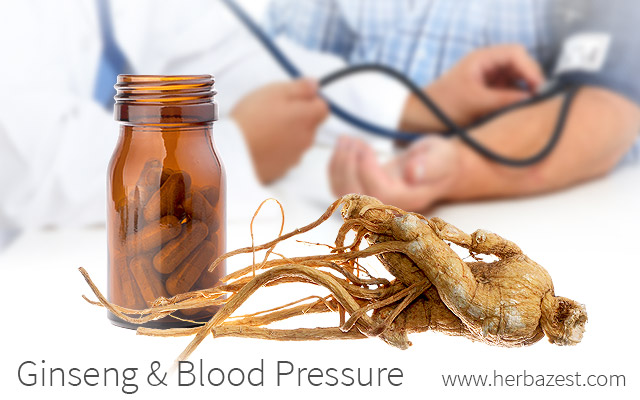Ginseng is an extremely beneficial herb for many aspects of human health, including its ability to help lower blood pressure.
Blood Pressure: Causes and Triggers
When monitoring blood pressure, it is essential to gauge the mean arterial blood pressure over the whole heart cycle. A normal mean pressure is 100 mmHg, but people can experience as high as 160 mmHg as a result of hypertension, or even as low as 0 mmHg in cases of severe bleeding or compromised circulation. Ginseng helps to relieve high blood pressure, which can be experienced temporarily - due to physical activity or stress - or as a recurring symptom, which receives a diagnosis of hypertension. While hypertension typically has no symptoms, it can lead to severe conditions such as stroke, heart failure, heart attack, and kidney failure.
Does Ginseng Raise Blood Pressure?
Contrary to popular belief, the link between ginseng and blood pressure is quite beneficial for those with hypertension. A study published in The American Journal of Chinese Medicine (1998) used 24-hour ambulatory blood pressure monitoring to track the changes in daytime blood pressure patterns in 26 subjects after eight weeks of red ginseng medication (4.5 g/day). The study found a significant decrease in systolic blood pressure (point of cardiac contraction) and a tendency of decline in diastolic blood pressure (point of cardiac relaxation). The study supports the use of ginseng as a complementary treatment for lowering blood pressure.
How to Use Ginseng for Blood Circulation Improvement
Ginseng can be consumed in a number of ways to help lower high blood pressure. While raw ginseng is the best way to receive all of the nutritious benefits of the herb, for the treatment of health conditions, red ginseng is considered the most medicinal form of the Panax species. However, due to its strong taste ginseng supplements are very popular. While ginseng powder can be added to foods and beverages, ginseng capsules are the most widely consumed form of the herb.
While it is true that Panax species are often used as a complementary aid for treating hypertension, taking ginseng and blood pressure medication at the same time may have a negative consequences. People taking prescribed drugs for hypertension must consult a physician before starting a treatment with ginseng, read the labels before purchasing any supplement, and follow the dosage as indicated.
People with hypotension should not consume ginseng, since it can further lower their blood pressure.
Ginseng and Other Herbs for Blood Pressure
The popular use of ginseng for blood circulation improvement has been corroborated by scientific studies. A significant impact on hypertension has been shown when 1.5 g of red ginseng is taken three times a day (a total daily dose of 4.5 g) for eight weeks, but research shows that cherries are also a significant source of relief. A study published in The American Journal of Clinical Nutrition (2016) found that drinking 60 ml of tart Montmorency cherry juice can also lead to a short-term reduction in blood pressure.
The benefits of ginseng for blood circulation can be enhanced when taken with ginkgo. In fact, both herbs are often paired in supplemental forms for treating hypertension. Other plants with anti-hypertensive properties are cinnamon, garlic, and turmeric.
Sources
- Herb Research Foundation, Red Ginseng Shows Mild Blood Pressure-Lowering Effect, 1998
- Journal of Human Hypertension, The effect of ginseng (genus Panax) on blood pressure: a systematic review and meta-analysis of randomized controlled clinical trials, 2016
- Science, Blood Pressure Control--Special Role of the Kidneys and Body Fluids, 1991
- The American Journal of Clinical Nutrition, Effects of Montmorency tart cherry (Prunus Cerasus L.) consumption on vascular function in men with early hypertension, 2016.
- American Journal of Chinese Medicine, Effect of red ginseng on blood pressure in patients with essential hypertension and white coat hypertension, 1998




